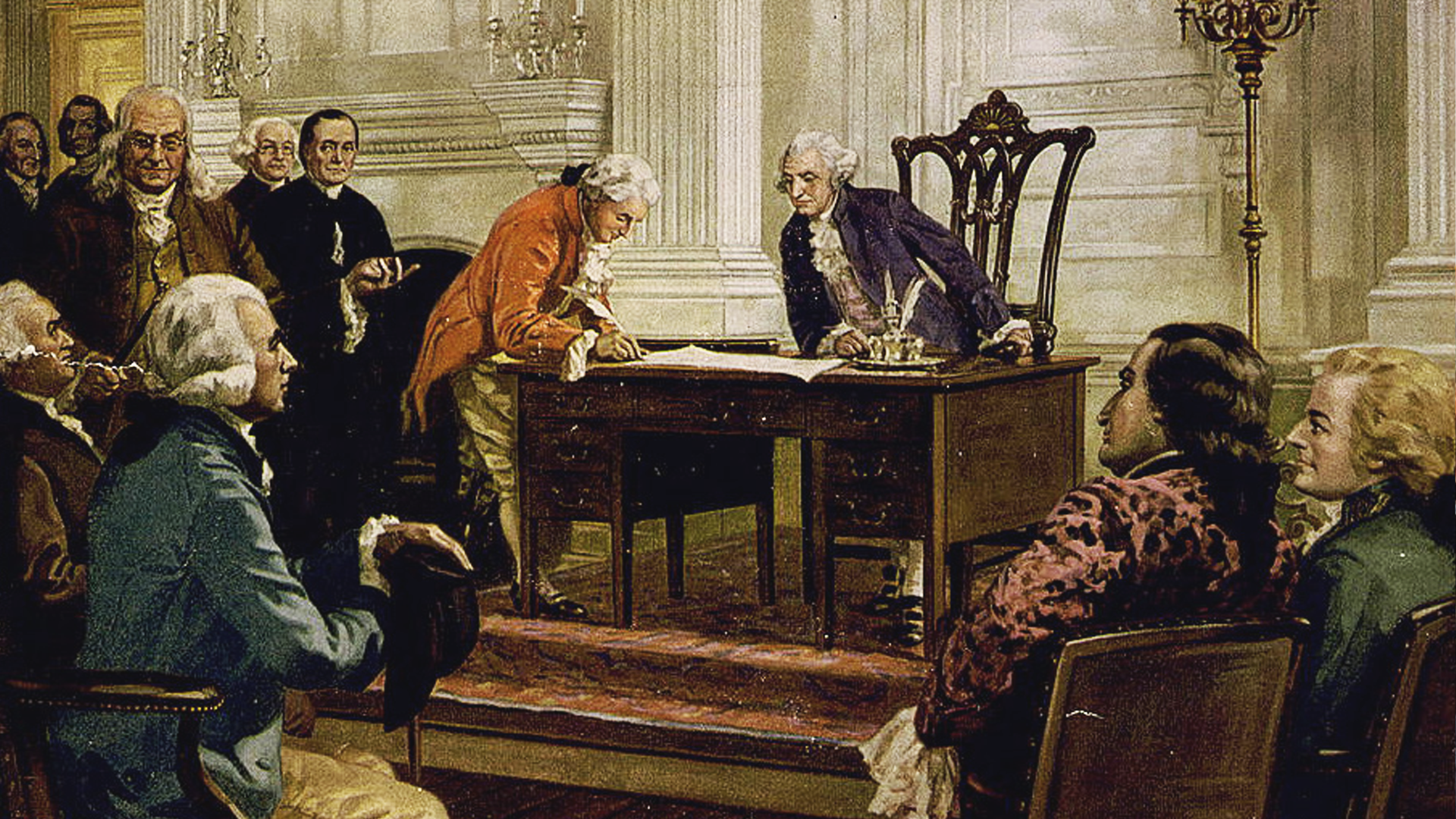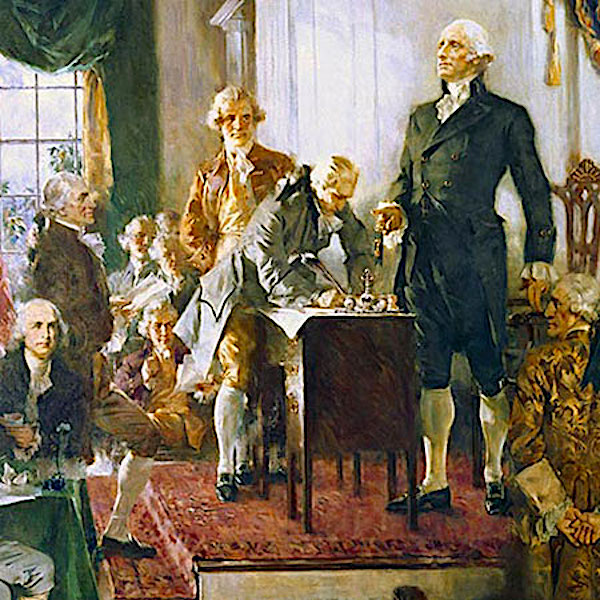U.S. Constitution Signed in Philadelphia

Delegates in Independence Hall gathered around a table as George Washington presides over the signing of the Constitution.
What Happened?
The young United States was wobbling in the 1780s. The Articles of Confederation left Congress too weak to tax, raise troops, or solve disputes between states. Many leaders feared the union might fall apart.
In 1787, delegates from twelve states (all but Rhode Island) gathered at the Pennsylvania State House, today called Independence Hall. George Washington was chosen to preside; reporters were kept out so delegates could debate freely.
The goal was to tweak the Articles. Instead, delegates started fresh. They designed a federal government with three branches—legislative, executive, and judicial—so no single branch would dominate.
A big fight broke out over representation in Congress. Large states wanted seats based on population; small states wanted equal votes. The Connecticut (Great) Compromise created two chambers: a House by population and a Senate with two seats per state.
Other issues cut even deeper. To keep the fragile union together, delegates accepted compromises that protected slavery: counting enslaved people as three-fifths for representation and taxes, delaying any ban on the slave trade until 1808, and requiring the return of people who escaped bondage.
By September, a Committee of Style polished the final text—about 4,200 words. On September 17, 39 of the 55 delegates signed. Some had left; others refused, arguing the document still gave the central government too much power and lacked a bill of rights.
Ratification wasn’t guaranteed. Supporters—writing as “Publius” (Alexander Hamilton, James Madison, and John Jay)—published the Federalist Papers to explain how the new system would work and why checks and balances would guard liberty.
Beginning in December 1787, states debated fiercely. A key deal won over skeptics: ratify now, add protections immediately. The Constitution became law when New Hampshire became the ninth state to approve it in June 1788; the new government began in 1789.
True to the promise, Congress proposed a set of amendments. Ten—known as the Bill of Rights—were ratified in 1791, protecting freedoms like speech, religion, press, assembly, due process, and more. Over time, additional amendments would expand rights and participation.
The Constitution is both a product of its time and a living framework. It launched a stronger union and a habit of self-correction—through elections, courts, and amendments—even as Americans continue to wrestle with its compromises and work to make “We the People” mean all of us.
Why It Matters
The Constitution didn’t solve every problem—some it sidestepped—but it gave the country a durable way to argue, adapt, and expand rights. Learning how it was built, debated, and amended helps citizens connect the big ideas of self-government to everyday responsibilities and the unfinished work of a more perfect union.
?
Why were the Articles of Confederation too weak for the new nation?
How do checks and balances actually limit power in practice?
What were the major compromises over representation and slavery, and what were their consequences?
How did the promise of a Bill of Rights help win ratification?
Which amendment do you think most directly affects your daily life—and why?
Dig Deeper
How a meeting meant to revise the Articles became a plan for a new government with three branches and checks and balances.
A crash course explainer of why the Articles failed, how the Constitution works, and how it can be changed.
Learn about the compromises met in ratifying the U.S. Constitution,the failures (and few successes) of the Articles of Confederation, how delegates settled on a two-house system of representation, the issues of slavery and population that have been embedded into our constitution, and how federalists and anti-federalist opposition provided the U.S. a Bill of Rights.
Related

The Constitutional Convention: Building a More Perfect Mess
In the summer of 1787, 55 men locked themselves in a room to fix the government—and ended up rewriting it from scratch. What came out wasn’t perfect, but it changed everything.

Federalists vs. Anti-Federalists: The Battle That Built the Constitution
One side feared chaos. The other feared tyranny. Together, they gave us the Constitution—and the Bill of Rights.

From Articles to the Constitution
The Articles of Confederation got us through a revolution—but not much more. Weak laws, no executive, and constant in-fighting forced the Founders back to the drawing board. What came next? The Constitution.
Further Reading
Stay curious!

